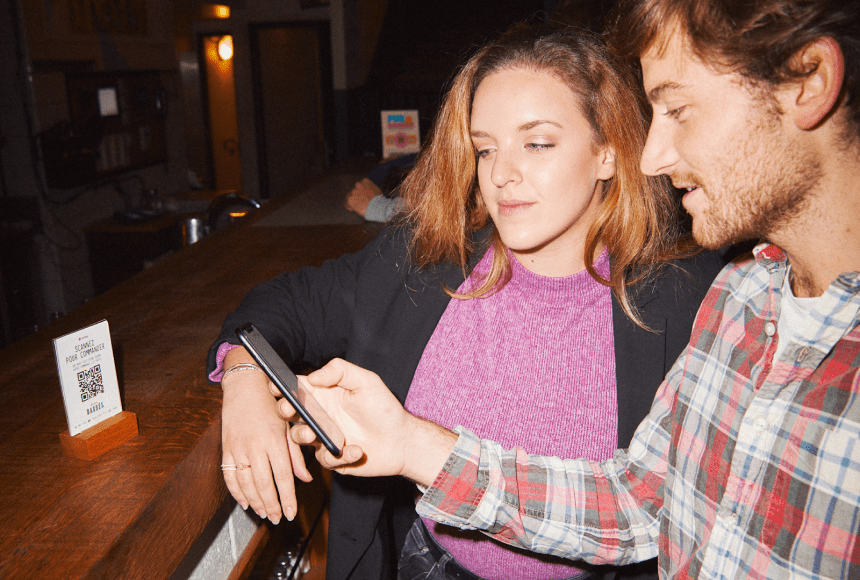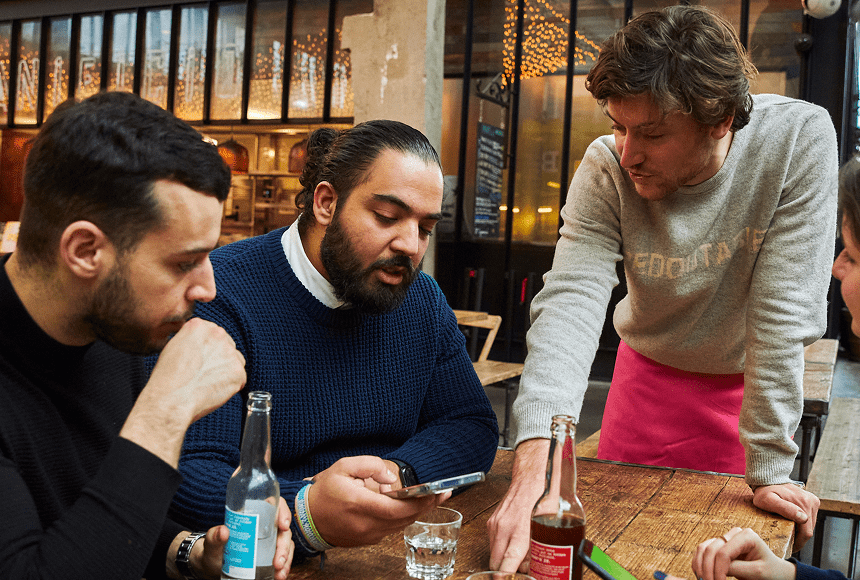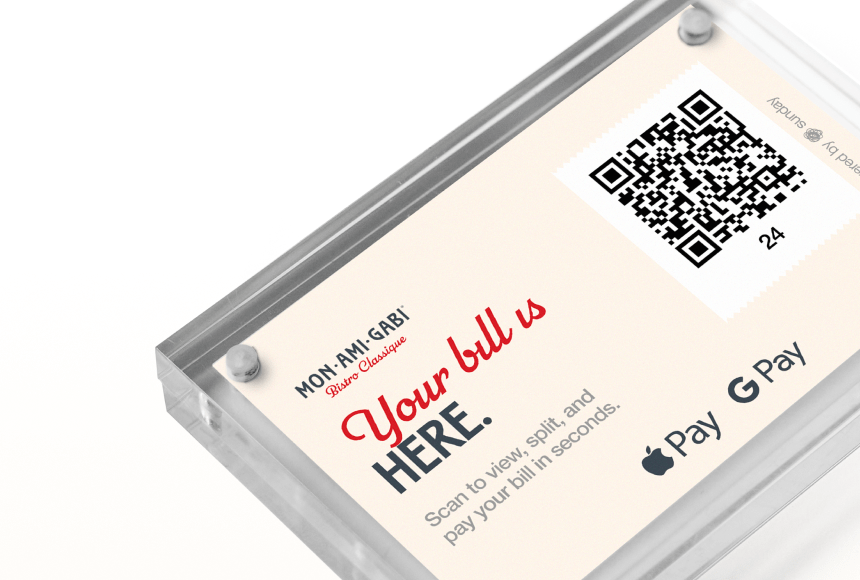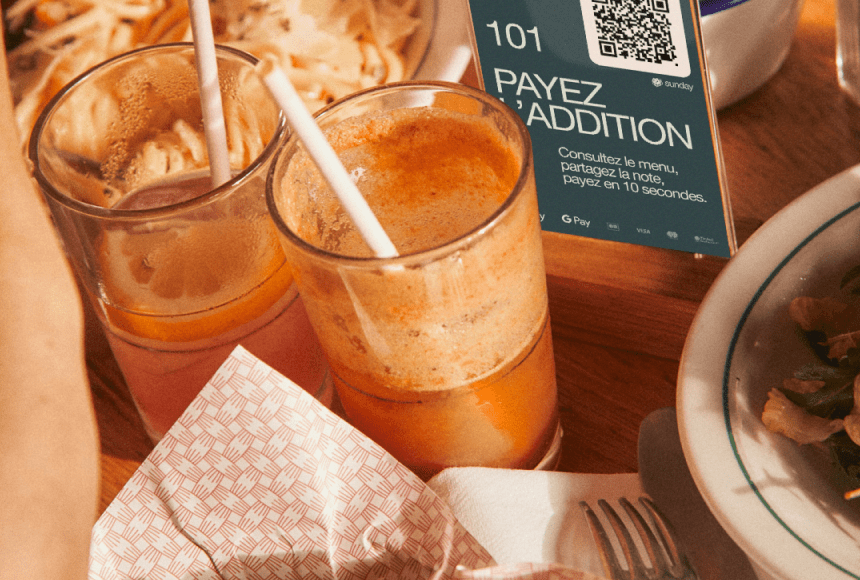
Empowering Diners with Flexible Ordering Options
Why Modern Diners Value Autonomy
Imagine a bustling Friday evening at your restaurant. Tables are filling up fast, servers are darting from table to table taking orders, and you have a line of eager guests at the entrance. In the midst of this organized chaos, customers may feel hurried or overlooked, especially if a server can’t get to them right away. This scenario is all too common in the dining industry.
Today’s diners, or “modern diners,” crave more control over their experience. They want to place an order at their own pace, enjoy contactless and stress-free payment, and savor a leisurely meal instead of waiting for the check. According to the National Restaurant Association, guests increasingly prefer digital solutions to streamline dining—from online reservations to contactless payments. When customers feel that they have autonomy over how and when they order, they’re more likely to leave your establishment happy, tip generously, and even return for another meal.
In many ways, offering flexible ordering solutions is the modern adaptation of hospitality: making diners feel empowered rather than rushed, and delivering an experience that is both personal and convenient. Let’s explore why guests prefer to order on their own time and how restaurants benefit when they embrace this trend.
The Shift from Traditional Ordering to Self-Ordering
Traditional table service often relies on a server who approaches the table, describes specials, then asks for everyone’s orders. This system works, but it also has inherent inefficiencies. Servers can inadvertently rush diners by hovering, or they can be too busy and unintentionally keep people waiting. In either scenario, diners can feel pressure to order quickly or remain idle until someone is available.
Over the last few years, self-ordering technology—a category that includes ordering kiosks, QR code ordering, and mobile apps—has experienced significant growth. Customers have become accustomed to controlling the ordering process in other industries, such as retail or grocery pickup, and they now expect the same autonomy when they dine out. Some restaurants have begun placing QR codes at each table, allowing customers to browse the menu, customize dishes, place orders, and even pay—all without waiting for a server’s attention. This approach instantly removes the bottleneck created when too many diners rely on a handful of staff.
Self-ordering aligns perfectly with the evolving expectations of guests, who want to see what’s on the menu at their own pace and discover all the possibilities your kitchen has to offer. Guests can take the time to read detailed dish descriptions, nutritional info, or even wine pairings if you choose to include those details. This sets an inviting, informative tone right from the start, communicating that your restaurant values transparency and customer comfort.
Reasons Guests Enjoy Ordering on Their Own Time
Why, exactly, do customers seem to embrace self-ordering options so readily? Below are a few reasons diners find this approach more desirable.
- Less Pressure: Some guests hate feeling rushed, whether they have questions about a complex dish or they’re simply torn between two entrées. When they can browse and order at their own pace, it reduces stress and enhances the overall dining experience.
- More Control: Guests who handle their own orders can easily customize dishes without fear that the server might forget a requested detail. From choosing extra toppings to removing allergens, autonomy in ordering offers greater accuracy and peace of mind.
- Technology Familiarity: Most customers today are comfortable with smartphones. According to a study by eMarketer, mobile payment usage in the US has been climbing steadily. Leveraging these habits in a dining context feels natural to many people.
- Time Efficiency: Busy professionals or families juggling schedules appreciate the efficiency of scanning a QR code, placing their orders quickly, and paying immediately once they’re done. It eliminates the wait to signal a server for the check.
- Respect for Personal Space: Post-pandemic, many customers still value additional space during their dining experience. Self-ordering and contactless payment offer a sense of security that resonates with health-conscious individuals.
Improving Your Operation with Self-Ordering Solutions
Of course, the benefits of self-ordering systems aren’t limited to satisfying your diners. By giving guests the flexibility to order whenever they choose, you’ll find that certain operational tasks become more efficient.
- Reduced Errors: Because customers directly input their selections, mistakes caused by miscommunication or illegible handwriting are greatly diminished. This results in fewer returns to the kitchen and less food waste.
- Optimized Labor: Instead of juggling multiple tasks—taking orders, re-filling glasses, delivering food—your staff can focus on what truly matters: providing personalized hospitality. This shift allows servers to devote more time to making guests feel welcome and well cared for, rather than merely scribbling down orders.
- Faster Table Turnover: When diners can settle their bill at will, there’s no need for them to wait for a server to bring the check and handle the card. Tables can turn over faster, which optimizes your seating capacity.
- Upselling Opportunities: Self-ordering platforms can be programmed to suggest add-ons or complementary items. Upsell a side dish, dessert, or specialty drink automatically, without putting the onus entirely on the server. It’s a souped-up digital version of “Would you like fries with that?”
- Direct Feedback: By integrating post-payment feedback options—like prompting for tips or even a link to leave a Google review—restaurants can glean valuable insights and encourage happy customers to share their experiences online.
There is a strong link between taking control of the dining experience and overall satisfaction. When owners streamline communications and let diners set their own pace, it transforms the interaction from a clunky, traditional approach into a straightforward, ongoing dialogue.
Addressing Common Concerns About Self-Ordering
Naturally, some restaurant owners worry about potential downsides. Let’s examine common concerns and see why they might not be as big a hurdle as they initially appear:
- Fear of Losing the “Human Touch”: Embracing a self-ordering system doesn’t mean replacing your servers. It simply allows staff to focus on rapport-building tasks, like recommending wine pairings or checking on special requests. In fact, a digital ordering system can free them from repetitive tasks and let them invest more in genuine human interactions.
- Technology Hesitation: Some owners worry about setting it up or have concerns about their clientele’s ability to adapt. In reality, these platforms are often user-friendly, featuring large fonts, clear visuals, and straightforward instructions. Providers of QR code payment solutions typically offer training and customer support to make the transition as smooth as possible.
- Upfront Investment: Admittedly, installing new systems can come with costs. However, consider the long-term return: fewer errors, higher table turnover, and solid brand loyalty. Each of those benefits directly impacts your bottom line. Additionally, many self-ordering solutions are cloud-based, so they don’t require you to purchase expensive hardware—it’s often just a matter of a monthly subscription.
How to Introduce Self-Ordering in Your Restaurant
Transitioning to a self-ordering model usually happens in small, manageable steps. You don’t have to overhaul everything overnight. Here’s a blueprint you can follow:
- Start with a Pilot: Choose a section of your restaurant, perhaps the outdoor patio or the bar area, and introduce QR code ordering. Observe how guests react, gather feedback, and tweak the interface or menu options accordingly.
- Train Your Staff: Make sure your servers and hosts know the ins and outs of the technology. They’ll need to guide less tech-savvy customers, answer questions, and troubleshoot minor issues. Proper training ensures everyone remains calm and confident if a glitch arises.
- Optimize Your Menu: Digital menus let you add mouth-watering images, highlight special deals, and update items on the fly. Capitalize on the interactive nature by mentioning that your tacos come with optional spicy salsa or your house salad can be upgraded with grilled chicken.
- Encourage Feedback: Make it clear you’re open to hearing what they think—whether it’s compliments or concerns. This is where real learning occurs. You might integrate a quick survey after they pay or leave a note on the final screen: “How was your ordering experience? We’d love to know.”
- Scale Up: Once you’ve ironed out any bumps, roll self-ordering out to the rest of your dining room. Keep monitoring performance. Over time, you’ll likely notice increased efficiency, fewer order errors, and an uptick in average ticket size.
Leverage Data to Enhance Guest Experiences
One of the most compelling reasons to offer self-ordering is the wealth of data it provides. You’ll gain insight into popular dishes, peak ordering times, how customers interact with your specials, and which upsells convert best. By analyzing this data, you can refine your menu, add more descriptive text where needed, and decide which promotions are worth repeating.
Data analytics can also spotlight items that might look unappealing on paper but sell well when accompanied by great photos. If, for instance, your vegetarian burger is consistently being overlooked despite rave reviews from those who order it, consider updating the menu text or adding an appetizing picture. Subtle changes can have a significant impact on sales, and a digital menu can be updated instantly—avoiding costly reprints or guesswork.
Real-Life Example: “The Cozy Spoon”
To illustrate, let’s look at a fictional restaurant we’ll call “The Cozy Spoon.” When the owners, Jess and Sam, introduced a mobile ordering system via QR codes, they started small. They placed a single QR code on each table and launched it during brunch hours, a typically busy period. They encouraged guests to scan and explore the new ordering option, while servers were on hand to assist or take traditional orders.
Within the first few weeks, they noticed:
- Higher Check Averages: Diners were more likely to add extra sides like avocado toast or specialty coffees when prompted by enticing photographs online. This uptick was significant enough to cover the system’s subscription fee within a month.
- Reduced Wait Times: Tables turned over faster because guests could pay immediately after finishing their meals, rather than waiting for a server to bring the check.
- Better Staff Engagement: Freed from routine tasks, servers spent more time describing the restaurant’s farm-to-table concept and collecting valuable feedback. They felt more connected to guests and were able to deliver a warmer, more personalized level of service.
Jess and Sam found that the perceived ‘risk’ of losing the human element was unfounded. Instead, they discovered that giving guests the option to self-order actually enhanced the convivial atmosphere of their establishment.
Embracing a Smoother Payment Process
Once you place more control in the hands of your customers, don’t forget one of the most crucial moments: payment. In many restaurants, waiting for the bill is a final pinch point, especially when the dining room is at capacity. By adding a secure payment solution—like scanning a QR code on the check, or even scanning the same QR code used for ordering—you streamline the settlement.
Apps like sunday take this a step further. Instead of your employees running physical cards through a payment terminal, your guests can finalize payments through their smartphones. Tips happen in real time and customers can decide on the amount privately, which often encourages a more generous tip. They can even leave a quick Google review if they’re feeling extra appreciative. Smooth payment experiences leave a lasting positive impression and reduce the risk of negative emotions festering during checkout.
From One Restaurant Owner to Another
Having spent years in the industry, I’ve seen firsthand how quickly the dining landscape changes. We’ve gone from strictly pen-and-paper ordering to robust point-of-sale systems, and now to full-blown self-ordering with quick, contactless payment. Each shift has met initial skepticism, but those who embraced new technology often found themselves ahead of the curve—reaping the rewards in customer satisfaction and, ultimately, their profit margins.
Today’s guests are tech-savvy, time-conscious, and looking for memorable experiences that fit into their lifestyle. Offering self-ordering meets these needs directly. It says, “Go ahead, take your time. Build the meal you want. Pay when you’re ready.” That sense of control and autonomy translates into higher satisfaction—nobody feels ignored, rushed, or pressured into making snap decisions.
This advantage extends to your staff. Servers can breathe easier knowing they’re not constantly juggling new orders, missed modifications, or search-and-rescue missions for the credit card machine. Instead, they’re present where it matters most: curating a unique dining experience by offering personalized menu suggestions, building rapport with regulars, and ensuring that any special requests (gluten-free bread, birthday candles, etc.) are fulfilled with care.
Looking Ahead
Flexible ordering solutions will likely become the new baseline for restaurants. Guests who have grown accustomed to scanning QR codes for menus now expect that as a default—just like how many of us expect a Wi-Fi password or an online reservation system. The convenience factor cannot be overstated, especially when it comes to capturing and retaining loyal guests in the competitive culinary market.
By offering self-ordering and streamlining the payment process, your establishment sends a message that you respect your diners’ time and comfort. This can be the difference between a one-time visitor and someone who becomes a loyal brand ambassador. With word-of-mouth and online reviews influencing so many dining decisions, you want every table to depart with that feeling of “That was so easy and pleasant—let’s do it again next week!”
The Next Step: Elevate Your Restaurant Experience
Allowing guests to order on their own time represents more than just a trend—it’s a fundamental upgrade to the way restaurants do business, and a direct response to what modern consumers demand. Implementing a self-ordering system, alongside a seamless payment solution, can yield multiple benefits:
- Empower diners to explore and customize your menu at their own pace.
- Free up servers to engage more meaningfully with guests.
- Eliminate wait times for ordering or payment, reducing table churn.
- Gather valuable customer data that refines future strategies.
- Strengthen your brand reputation for convenience and customer focus.
Ultimately, these enhancements converge into one overarching benefit: happier diners who feel in control of their experience. They’ll remember the freedom they had in customizing their meals, the prompt service, and how effortless it was to finalize the payment. This memory often translates into recurring visits, stronger loyalty, and positive recommendations.
The future of dining is about blending tradition with innovation—preserving the warm, welcoming feel of table service while leveraging technology to remove friction points. If you haven’t yet stepped into the realm of self-ordering and frictionless payment, there’s no better time to begin. Your guests will appreciate the thoughtfulness, and your bottom line will likely reflect the impact of this shift faster than you might expect.
Find out more today
Drop us your details below and we’ll reach out within the next 24h




